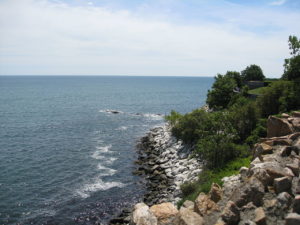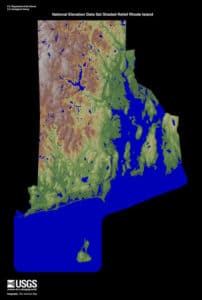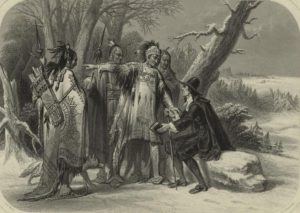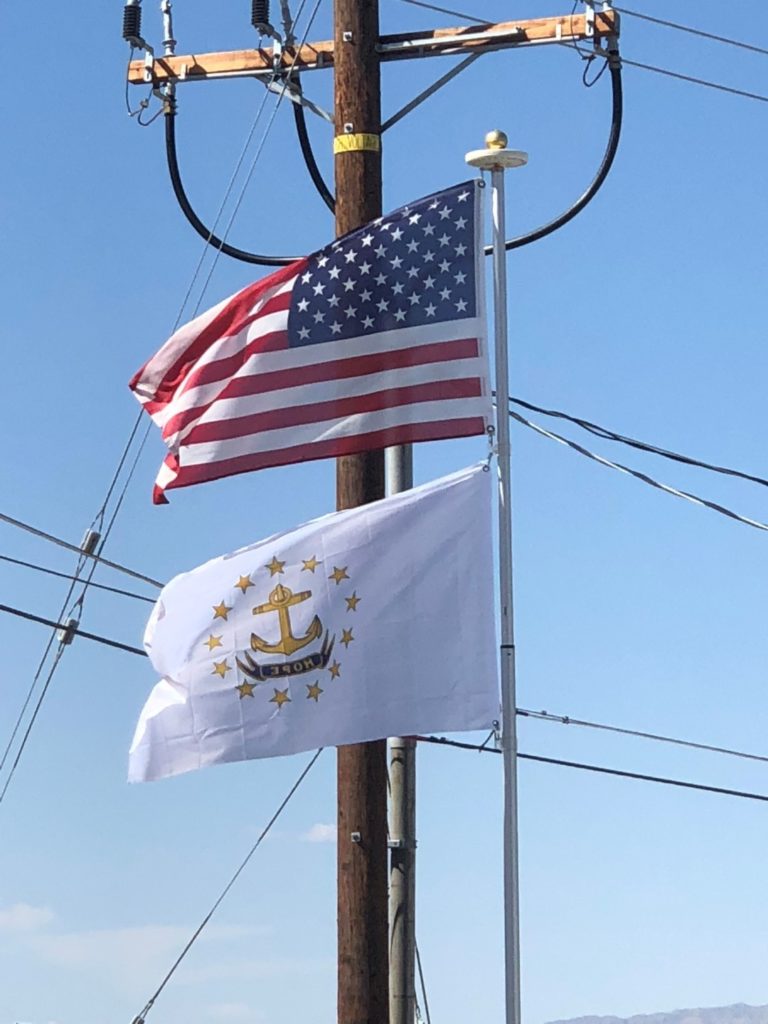
Rhode Island is nicknamed the Ocean State and has a number of oceanfront beaches. It is mostly flat with no real mountains, and the state’s highest natural point is Jerimoth Hill, 812 feet above sea level.
Rhode Island has two distinct natural regions. Eastern Rhode Island contains the lowlands of the Narragansett Bay, while Western Rhode Island forms part of the New England Upland.
Narragansett Bay is a major feature of the state’s topography. There are more than 30 islands within the bay. The largest is Aquidneck Island, shared by the municipalities of Newport, Middletown, and Portsmouth. The second-largest island is Conanicut; the third-largest is Prudence. Block Island lies about 12 miles off the southern coast of the mainland and separates Block Island Sound and the Atlantic Ocean proper.
History:
In 1636, Roger Williams was banished from the Massachusetts Bay Colony for his religious views, and he settled at the top of Narragansett Bay on land sold or given to him by Narragansett sachem Canonicus. He named the site Providence, “having a sense of God’s merciful providence unto me in my distress.” Eventually, it became a place of religious freedom where all were welcome..

In 1638, after conferring with Williams, Anne Hutchinson, William Coddington, John Clarke, Philip Sherman, and other religious dissenters settled on Aquidneck Island, then known as Rhode Island, which was purchased from the local tribes who called it Pocasset. This settlement was called Portsmouth and was governed by the Portsmouth Compact. The southern part of the island became the separate settlement of Newport after disagreements among the founders.
Samuel Gorton purchased lands at Shawomet in 1642 from the Narragansetts, precipitating a dispute with the Massachusetts Bay Colony. In 1644, Providence, Portsmouth, and Newport united for their common independence as the Colony of Rhode Island and Providence Plantations, governed by an elected council and “president”. Gorton received a separate charter for his settlement in 1648, which he named Warwick after his patron.
The colony was amalgamated into the Dominion of New England in 1686, as King James II attempted to enforce royal authority over the autonomous colonies in British North America. After the Glorious Revolution of 1688, the colony regained its independence under the Royal Charter.
Rhode Island’s tradition of independence and dissent gave it a prominent role in the American Revolution. Rhode Island was the first of the thirteen colonies to renounce its allegiance to the British Crown on May 4, 1776. It was also the last of the thirteen colonies to ratify the United States Constitution on May 29, 1790, once assurances were made that a Bill of Rights would become part of the Constitution.
Rhode Island was heavily involved in the Industrial Revolution. The second cotton mill in America, a water-powered textile mill, was built in Providence. The Industrial Revolution moved large numbers of workers into the cities.
During the American Civil War, Rhode Island was the first Union state to send troops in response to President Lincoln’s request for help from the states. Rhode Island furnished 25,236 fighting men, of whom 1,685 died. On the home front, Rhode Island and the other northern states used their industrial capacity to supply the Union Army with the materials that it needed to win the war. The United States Naval Academy moved to Rhode Island temporarily during the war.
